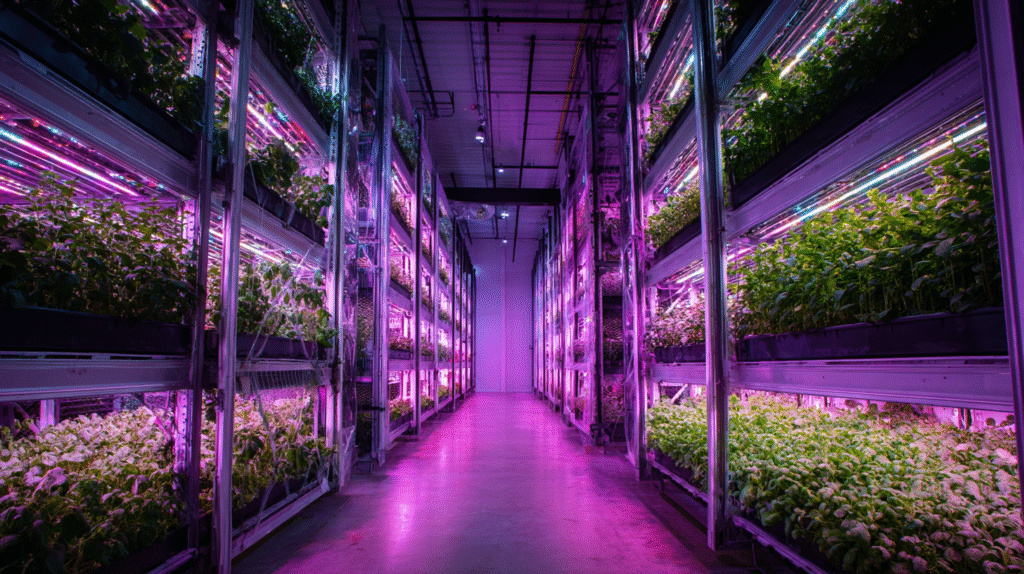Vertical farming is transforming urban landscapes. Vertical farms utilise advanced technologies to achieve a 10‑fold increase in food production per square foot compared to traditional farming methods.
Smart Farming Meets Smart Cities
Vertical farms are being incorporated into rooftops, warehouse spaces, and unused commercial areas across global cities. Their implementation reduces the need for long-distance food transportation, decreases environmental impact, and ensures fresh produce is available in all seasons.
These systems are not only reshaping how food is produced but also how cities are planned. With the integration of urban agriculture into smart city design, governments and developers are increasingly prioritising food security and sustainability as core pillars of infrastructure.
Sustainability at the Core
Vertical farming systems use up to 95 % less water than traditional farming and eliminate the need for pesticides. With energy-efficient LED lighting, climate control units, and closed-loop nutrient recycling—often powered by renewable energy—vertical farming stands as a leading model for sustainable, climate-resilient food production.
They also offer resilience against climate shocks, which are increasingly disrupting conventional agriculture. By moving food production indoors, vertical farming mitigates the risks posed by drought, flooding, and temperature volatility—making it a future-proof solution for feeding urban populations.
Economic and Environmental Impact
The economic benefits are equally promising. These farms support job creation in agritech, reduce post-harvest waste through localised distribution, and can revitalise disused urban spaces. As the cost of land and labour continues to rise, especially in dense metropolitan areas, vertical farming provides a scalable, high-yield alternative that meets the dual needs of economic viability and environmental responsibility.
Reshaping Food Systems
Vertical farming is no longer a futuristic concept—it is reshaping urban food systems through innovative, technology-driven methods. By integrating into smart city infrastructure, these farms deliver higher yields, drastically reduce resource use, and offer fresh, hyperlocal produce year-round, all while supporting sustainable development.


